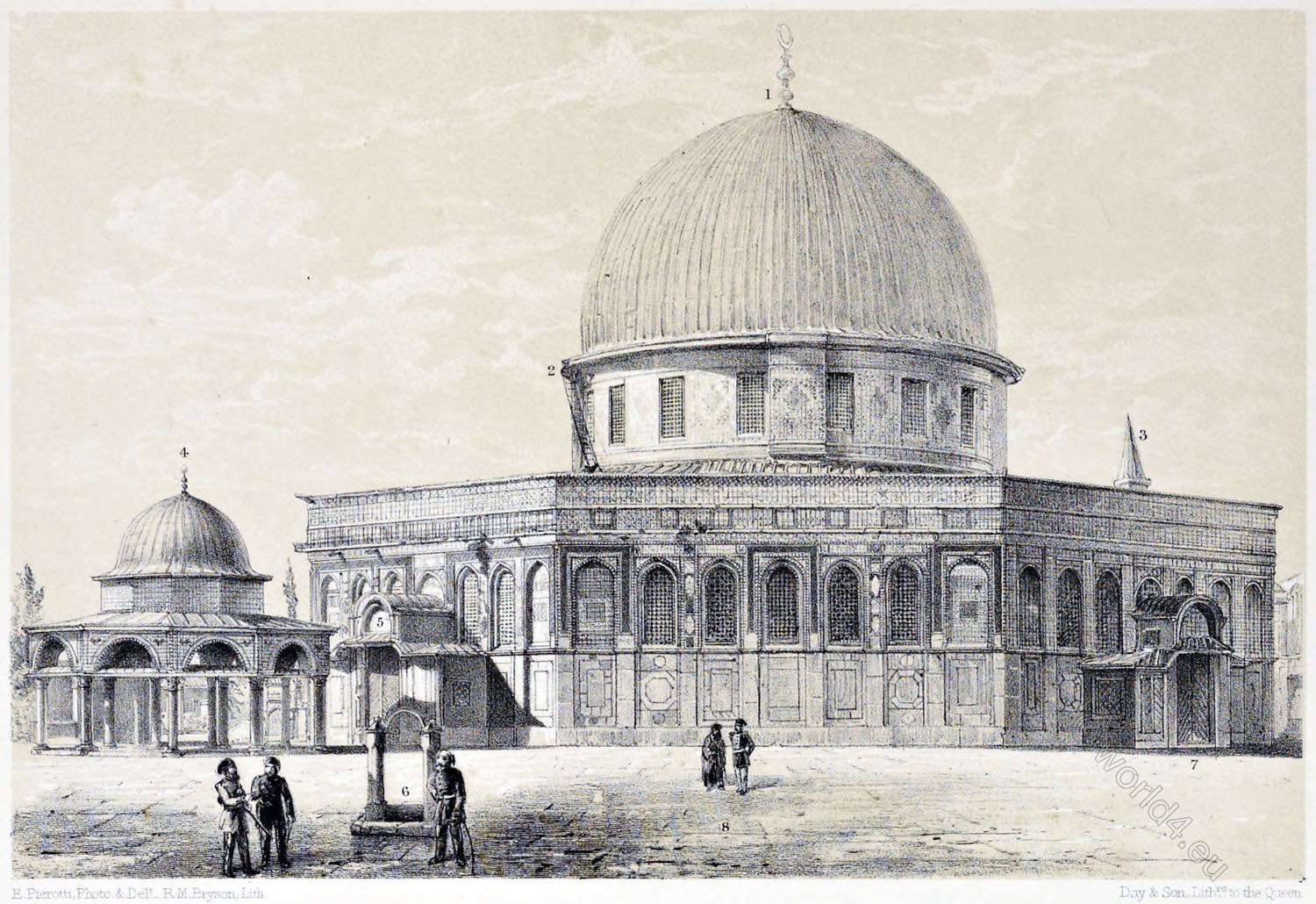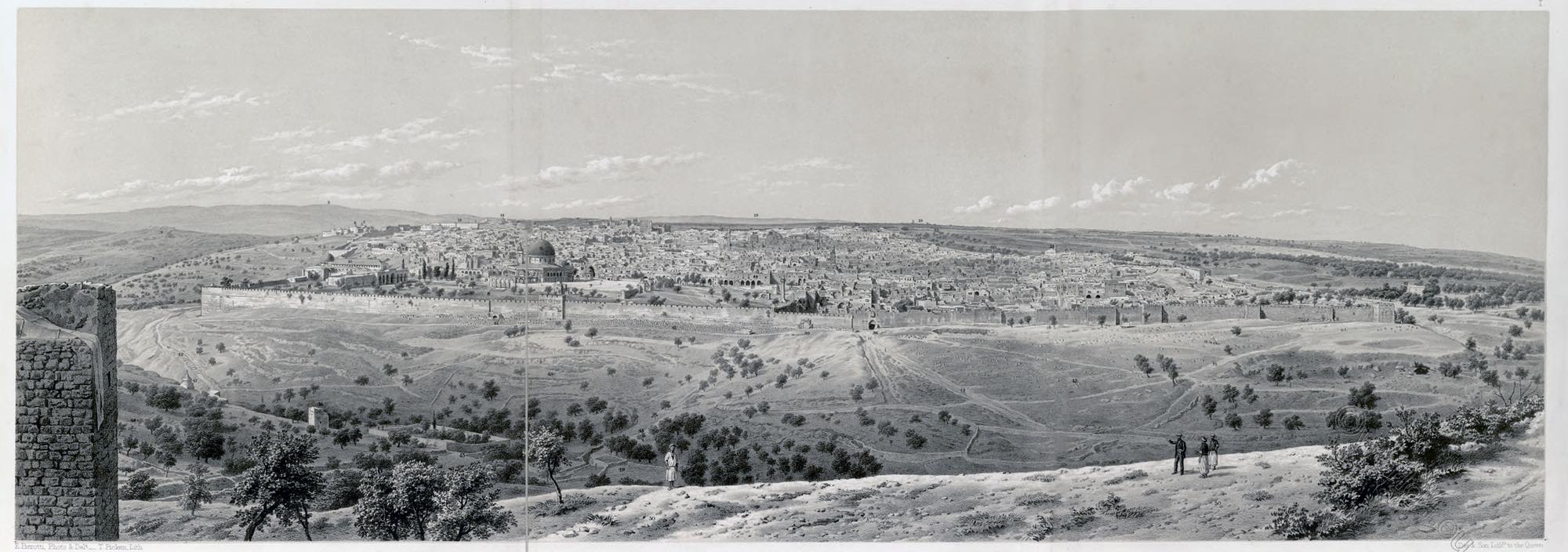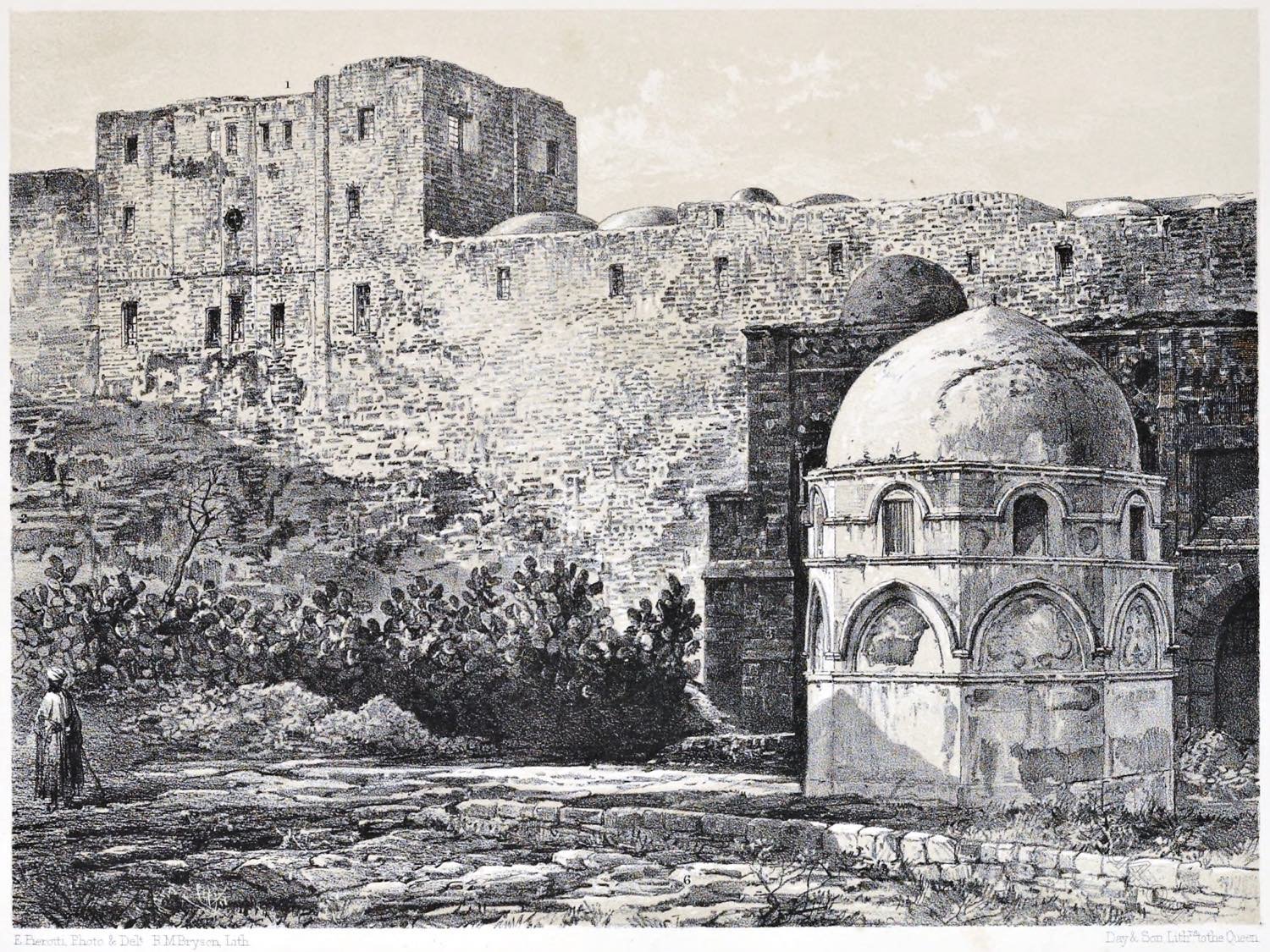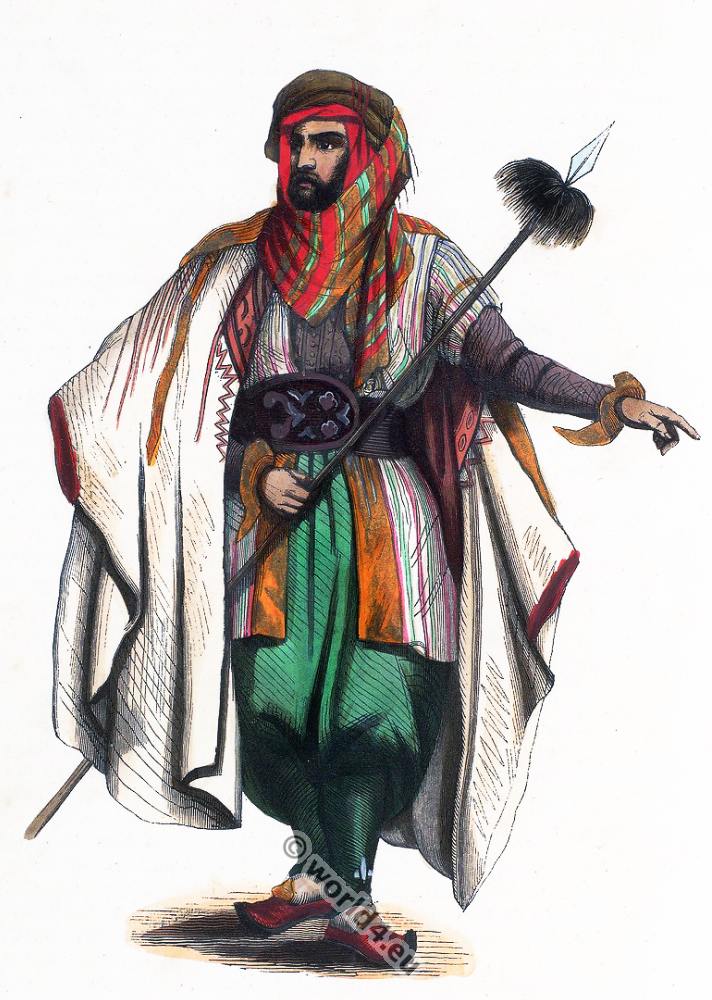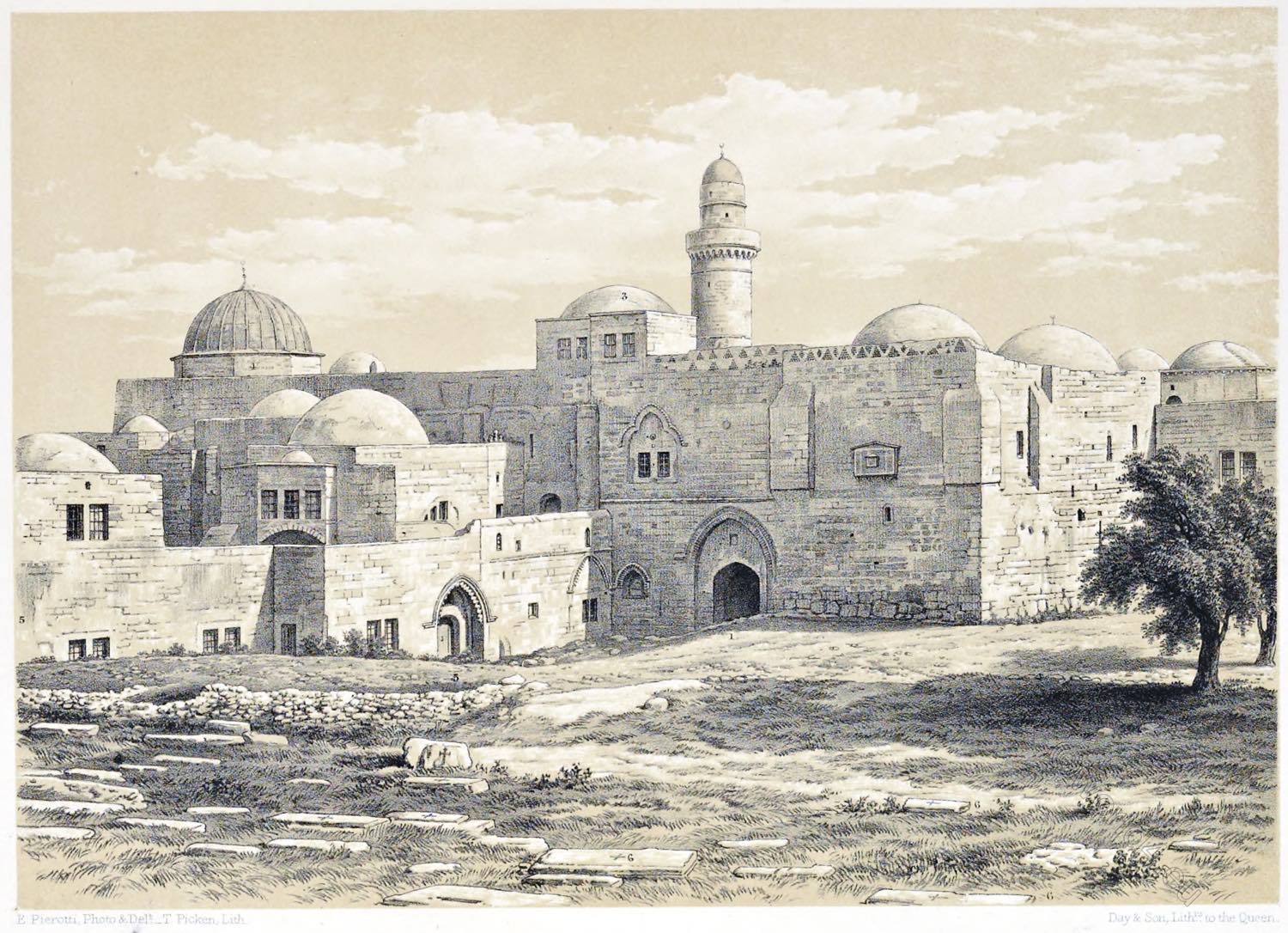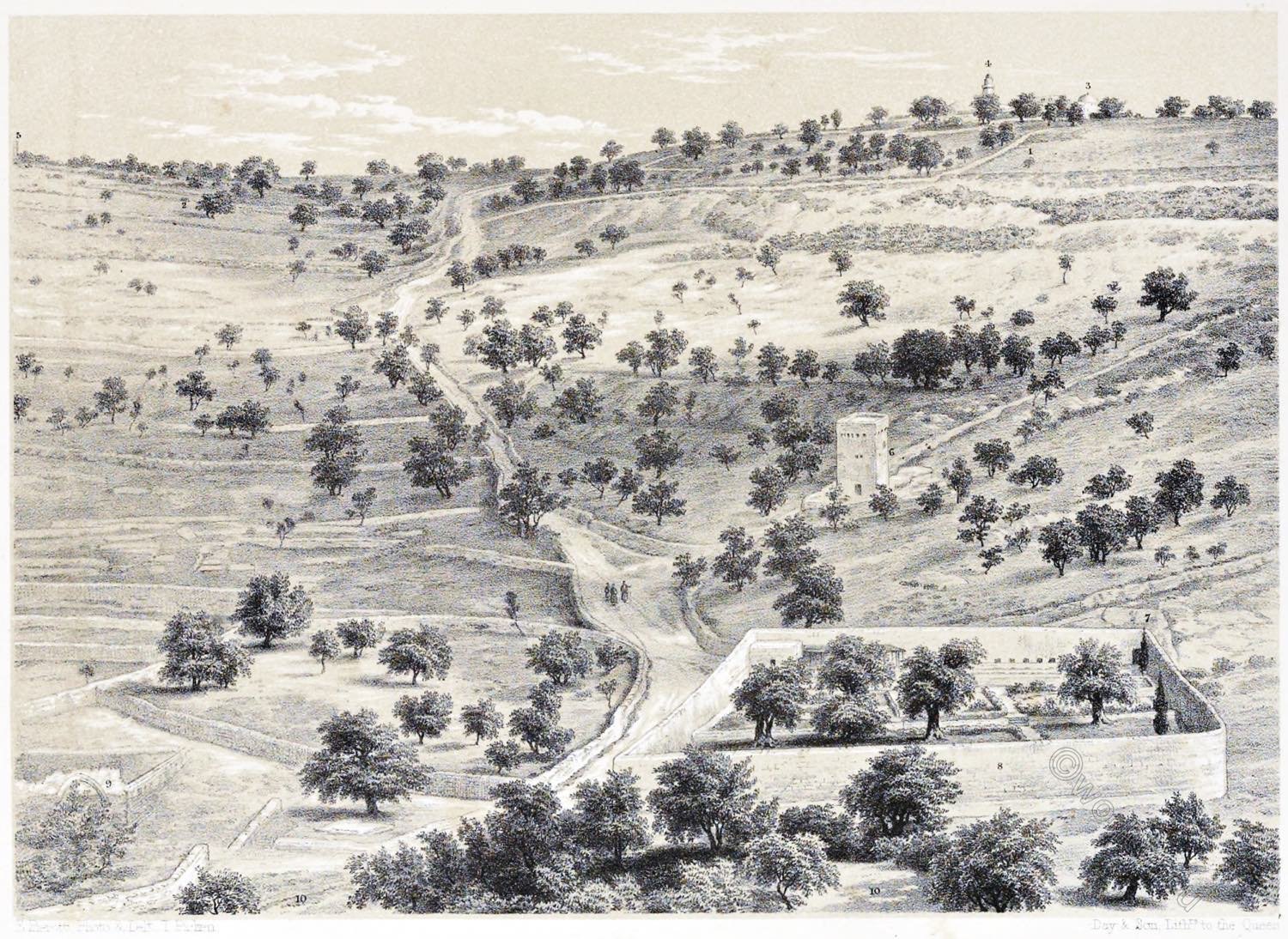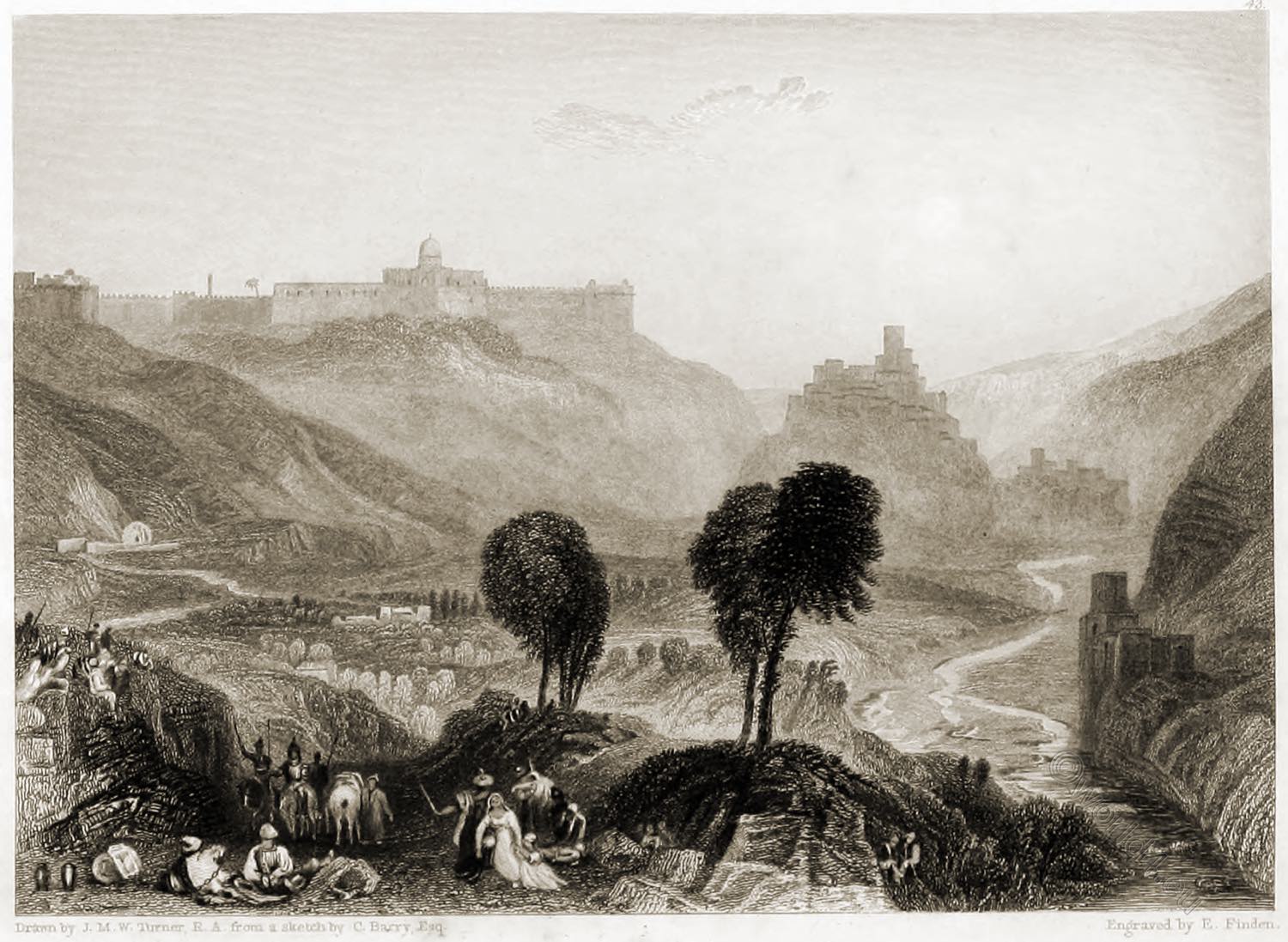
MOUNT MORIAH.
Drawn by J. M. W. Turner, from a Sketch made on the spot by Charles Barry, Esq.
The “Land of Moriah,” mentioned in Gen. xxii. 2., is supposed to mean all the mountains, on which and on their hollows Jerusalem was afterwards erected, and these mountains were called “Moriah,” or “Vision,” because, being high land, they could be seen afar off; but afterwards the name was appropriated to the most elevated part, on which Solomon built his celebrated temple (2 Chron. iii. 1.), on the site of which now stands the mosque of Omar, which no Christian can enter but at the peril of his life.
Dr. Richardson, however, whose skill and profession as a physician rendered him generally acceptable, obtained permission to explore this splendid monument of Saracenic magnificence, which forms a prominent object in our engraving.
Mount Moriah, strictly so called, is the third of the four hills on which Jerusalem stood in the time of Jesus Christ, according to the minute topographical description of Josephus. This mountain is a rocky limestone hill, steep of ascent on every side except the north, and is surrounded on the other sides by a group of hills, in the form of an amphitheatre. (Psal. cxxv. 2.) On the east it borders the deep valley of Jehoshaphat, through which the Brook Kidron is seen flowing on the right. For a view of the Brook Kedron, see Part I.
- Barbié du Bocage, Dictionnaire Géographique de la Bible, voce Moria.
Josephus’s History of the Jewish War, book v. ch. 4. Dr. Richardson’s Travels, vol. ii. pp. 283—312.
Source: Landscape Illustrations of the Bible, consisting of views of the most remarkable places mentioned in the Old and New Testaments, from original sketches taken on the spot engraved by W. and E. Finden, by Thomas Hartwell Horne (1780-1862), William Finden (1787-1852), Edward Francis Finden (1791-1857), Joseph Mallord William Turner (1775-1851), Bartolomé de las Casas (1474-1566). London: John Murray: Sold also by Charles Tilt, 1836
Continuing
Discover more from World4 Costume Culture History
Subscribe to get the latest posts sent to your email.

